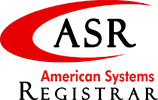World Leader in Electropolishing
A Company Built On Reputation

Have A Question? Call Now!
(620) 842-3701
Menu
Electropolishing And Handling Components For High Purity Applications
Home / Electropolishing And Handling Components For High Purity Applications
© 2024 Celco Inc. All Rights Reverved.
Menu